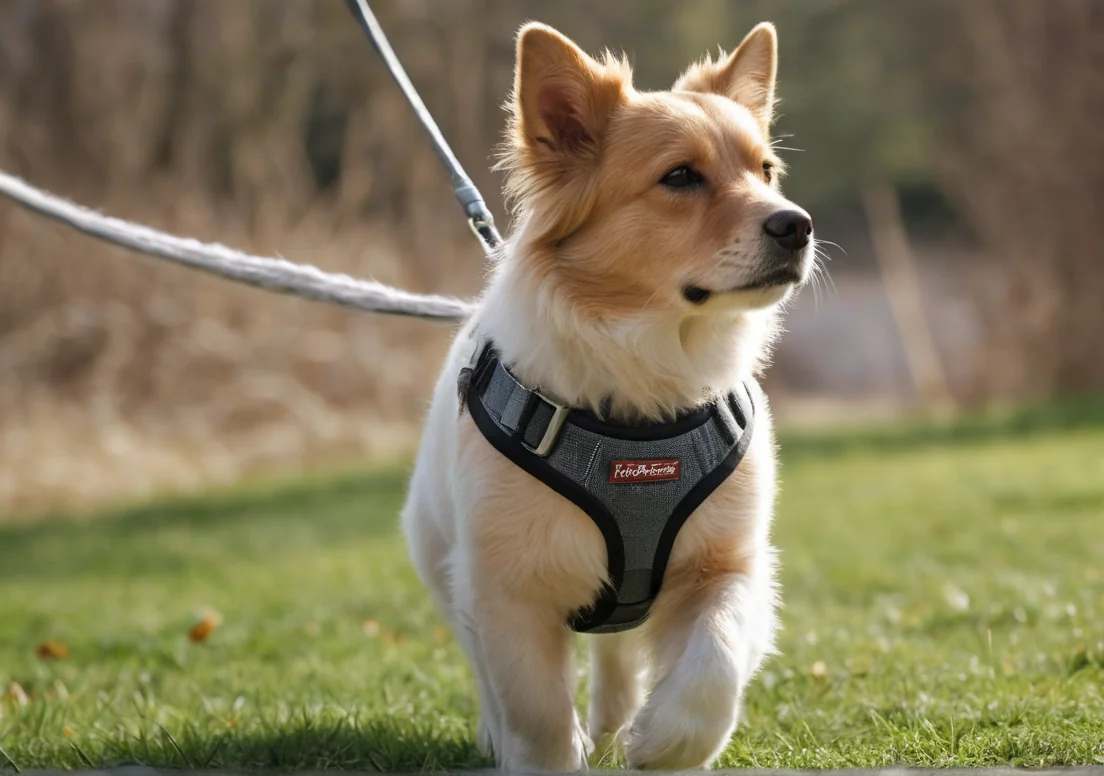Transitioning from a harness to a collar for walking your dog can feel like a big leap. It’s an adjustment not just for your furry friend but also for you as the owner.
The key to a smooth transition lies in patience and guidance. Start slowly, ensure your dog is comfortable with a collar, and build on positive reinforcement. There’s a world of tips and techniques waiting to help you navigate this change, so stick around to unlock some expert insights.

Why move from a harness to a collar
Switching from a harness to a collar can be a great step for both you and your dog. A collar can provide more freedom of movement, making walks feel less constraining. For dogs that enjoy a bit of independence, collars allow for natural movement without the bulk of a harness.
Training opportunities also improve with a collar. Many trainers recommend using a collar during obedience training, as it can help reinforce commands without the added complexity of harness adjustments. It’s easier to attach a leash to a collar, allowing for quick corrections if your dog pulls or strays during walks.
Additionally, collars are often simpler during everyday activities. They can be left on during playtime or while your pup is at home, making it easier to manage unexpected situations. Just make sure the collar is fitted properly. A collar can be lightweight and comfortable, which means your dog may even prefer it over a harness, especially for short trips outdoors.
What type of collar should be used
Choosing the right collar can make all the difference in this transition. Here are some popular styles and their benefits:
-
Flat Collars : Ideal for everyday wear, flat collars are versatile and can hold ID tags. Ensure it fits snugly—two fingers should fit comfortably between the collar and your dog’s neck.
-
Martingale Collars : These are great for dogs who might slip out of traditional collars. They tighten slightly when pulled, providing more control without choking your dog.
-
Breakaway Collars : For safety, breakaway collars release if caught on something. This is especially crucial for adventurous pups who like to explore.
-
Prong or Choke Collars : Use these cautiously. While they can be effective for training strong pullers, they can also cause injury if not used correctly. Always consult a professional trainer before choosing this option.
-
Reflective Collars : If you walk your dog early in the morning or late in the evening, reflective collars enhance visibility, keeping your pup safer.
Ultimately, choose a collar that suits your dog’s activity level and comfort. If your dog has sensitive skin, look for collars made of softer materials or those with padding. For dogs with strong pulling tendencies, a martingale may be the best fit.
If you’re interested in more detailed collar comparisons and safety tips, the American Kennel Club offers valuable information: AKC on Choosing the Right Collar.
Remember, the goal is to find something that works well for both you and your dog, ensuring a smooth and stress-free transition.
How to introduce the collar
Introducing a collar to your dog can be a breeze if you take the right approach. Start by laying the groundwork at home, where your furry friend feels safest. Choose a comfortable collar that fits well—about two fingers should fit snugly between the collar and their neck.
Next, let your dog sniff and explore the collar. Show it to them like it’s the coolest toy they’ve never seen. Associate the collar with good vibes by giving treats and praise. Slip it on for short periods while engaging in fun activities like playtime or a walk around the yard. This way, the collar becomes part of the positive experience rather than a bothersome accessory. Gradually increase the duration as they seem more comfortable.
You can also try putting the collar on during calm moments, like cuddle time or while they’re lounging. Always check for any signs of discomfort, and don’t hesitate to adjust its fit or style. Mixing it up with different textures or colors can make it feel new and exciting! Want more detailed tips? Check out this resource on dog collar training methods: American Kennel Club.
What are the signs of comfort or discomfort
Your dog’s body language is key in gauging their comfort with the collar. Here are some signs to look out for:
-
Comfort Signs :
- Relaxed posture: A loose tail and natural body stance indicate ease.
- Playfulness: If your dog engages in play or appears excited, they’re likely comfortable.
- Curiosity: Sniffing the collar or exploring it shows they’re interested.
-
Discomfort Signs :
- Whining or barking: Vocalization can indicate stress or frustration.
- Pawing at the collar: If they’re constantly trying to remove it, they’re not happy.
- Tucking tail or cowering: This can be strong indicators that something feels off.
Incorporate brief check-ins during walks to see how they’re adjusting. If you notice excessive shaking or signs of anxiety, it’s important to back off and allow them to acclimate at their own pace. Remember, patience is key. Transitioning should be a gradual, positive journey for both you and your dog!
How to train your dog to walk with a collar
Transitioning to a collar can feel daunting, but it’s absolutely achievable with some patience and strategies. First, you’ll want to introduce the collar gradually. Start by letting your dog wear the collar indoors for short periods. Make it positive by offering treats and praise whenever they have it on.
Once your pup is comfortable with the collar, practice leash walking at home. Use a lightweight leash that your dog isn’t used to. Keep your sessions short and fun—aim for about 5-10 minutes at a time, focusing on keeping the leash loose. If your dog pulls or struggles, stop and stand still until they calm down, then reward them when they come back to you.
Next, hit the outdoor trails! When you step outside, encourage your dog to explore, but if they pull ahead or lag behind, gently guide them back or reward them when they stay close. Consistency is key here; make sure to walk them in varied environments so they get used to new sights and sounds with the collar on.
- Use Treats: Carry treats during walks to reinforce good behavior.
- Patience is Important: Expect some trial and error—each dog adjusts differently.
- Adjust Fit: Ensure that the collar is fitted correctly—not too tight or too loose, allowing two fingers to fit comfortably between the collar and your dog’s neck.
Lastly, stay calm and relaxed. Your pup will pick up on your energy, and the more comfortable you are, the more they will be too. For further step-by-step training tips, the American Kennel Club offers excellent resources. Check out more here.
What are the common challenges faced
One major challenge many face is resistance to wearing the collar. Dogs used to a harness may feel restricted in movements with a collar. This can lead to pulling or trying to back away. If this happens, go back to wearing the collar indoors for brief periods. Gradual exposure can help ease this discomfort.
Another common issue is pulling on the leash. Dogs often pull harder on a collar than a harness. To combat this, focus on leash training techniques. When your dog pulls, simply stop walking and wait for slack in the leash. As soon as your dog returns to you—reward that behavior.
You might also deal with lack of focus. Distractions outdoors can be overwhelming for a lot of dogs, making it tough to maintain attention. If your dog seems to be losing focus, bring along their favorite toy or some high-value treats to reign them back in.
- Gradual Introduction: Slowly get your pup used to the feel of the collar and leash outdoors.
- Training Sessions: Set aside dedicated training time to reinforce good behavior and reduce distractions.
- Seek Help If Needed: If the transition becomes too difficult, consider reaching out to a professional trainer for guidance.
By anticipating these challenges and approaching them with a solid plan, you can smooth out those bumps in the transition from harness to collar walking.
When should the transition take place
Choosing the right moment for transitioning from a harness to a collar can make all the difference in your dog’s comfort and safety. Generally, this switch is ideal when your dog has reached maturity, which typically happens between 6 months to 1 year. By this age, most dogs have developed enough neck strength and control to handle a collar effectively.
Another good time to consider the transition is when you notice your dog negotiating walks without pulling excessively. A dog that’s become accustomed to walking nicely on a leash can handle a collar without undue strain. Additionally, if your dog is transitioning from puppyhood to adulthood, it’s a great opportunity to assess their growth and adjust their walking gear accordingly.
Pay attention to your dog’s specific behavior. If they’re consistently relaxed, confident, and responsive, you might be ready to make the switch. But if they seem overly excitable or are still learning leash manners, it might be worth holding off just a bit longer.
What are the safety considerations
Safety should always be your top priority when switching to a collar. Here are some essential tips to keep in mind:
- Choose the right collar: Opt for a well-fitted collar that’s neither too loose nor too tight. You should be able to fit two fingers comfortably underneath the collar.
- Monitor for sensitivity: Some dogs may be sensitive around their necks. If you notice any discomfort or signs of irritation, consider adjustments or even sticking with a harness.
- Introduce gradually: Don’t rush the process. Start by having your dog wear the collar indoors for short periods, gradually increasing the duration before heading outside.
- Consider activity type: For active dogs prone to pulling or those with strong instincts (like hunting breeds), using a collar might not be ideal. In such cases, a no-pull harness could still be the best option.
- Make leash attachment safe: Always ensure that the leash is securely clipped to the collar. Double-check the connection before you head out.
For further reading on dog collars and their appropriate use, you can check out this helpful resource from the American Kennel Club: Choosing the Right Collar for Your Dog.
Transitioning your dog doesn’t have to be a stressful experience. Just keep these safety tips in mind, stay observant, and enjoy those walks together!
Fun facts about collars
Collars have a rich history in pet ownership that goes beyond just being a fashionable accessory. The earliest collars date back to ancient Egypt, where they were made from leather and adorned with jewels to signify status. Fast forward to today, and collars serve multiple practical purposes—identification, control, and even training.
Interestingly, the design of collars has evolved. While earlier versions were often rigid, modern collars come in various materials and styles, including nylon, leather, and quick-release designs. Some collars even feature reflective strips for nighttime visibility, enhancing safety for your pup.
Collars also play an important role in the bond between pet and owner. Many dogs associate their collar with positive experiences, like going for walks or visiting the park. This association can be leveraged when transitioning from a harness to a collar, making it a fun and rewarding experience for both of you.
What benefits can come from mastering collar walking
Transitioning to collar walking can significantly benefit both dogs and their owners. A well-fitted collar allows for greater freedom of movement and can promote a more natural walking style for your pup. This shift can lead to improved posture and overall fitness, enhancing your dog’s physical health.
From an owner’s perspective, mastering collar walking means having a dog that is easier to manage. Collars provide a straightforward way to communicate with your pet without the bulkiness of a harness. This streamlined approach can alleviate pulling issues, making walks more enjoyable and stress-free.
Here are some specific benefits you’ll notice:
- Easier Training: A collar allows for easier verbal commands and adjustments since you can better control your dog’s head and neck movement.
- Greater Control: Collars often offer a better grip for owners, allowing for quick corrections when needed without tugging on the body.
- Space-Saving: Since collars are generally less bulky than harnesses, they’re easier to store and carry around, especially during short outings or quick potty breaks.
- Style Choices: Collars come in a variety of styles, materials, and colors, allowing you to express your dog’s personality while maintaining functionality.
One tip I’d add is to involve your dog in the process. Allow them to sniff and explore the collar before putting it on. Making it an exciting part of their routine can go a long way in ensuring they’re comfortable and happy with the transition.
For more detailed training tips and techniques specific to transitioning your dog from a harness to a collar, check out the American Kennel Club’s guide here.
Alex, a passionate animal lover, has experience in training and understanding animal behavior. As a proud pet parent to two dogs and three cats, he founded AnimalReport.net to share insights from animal experts and expand his knowledge of the animal kingdom.




